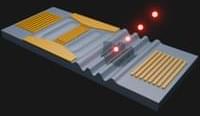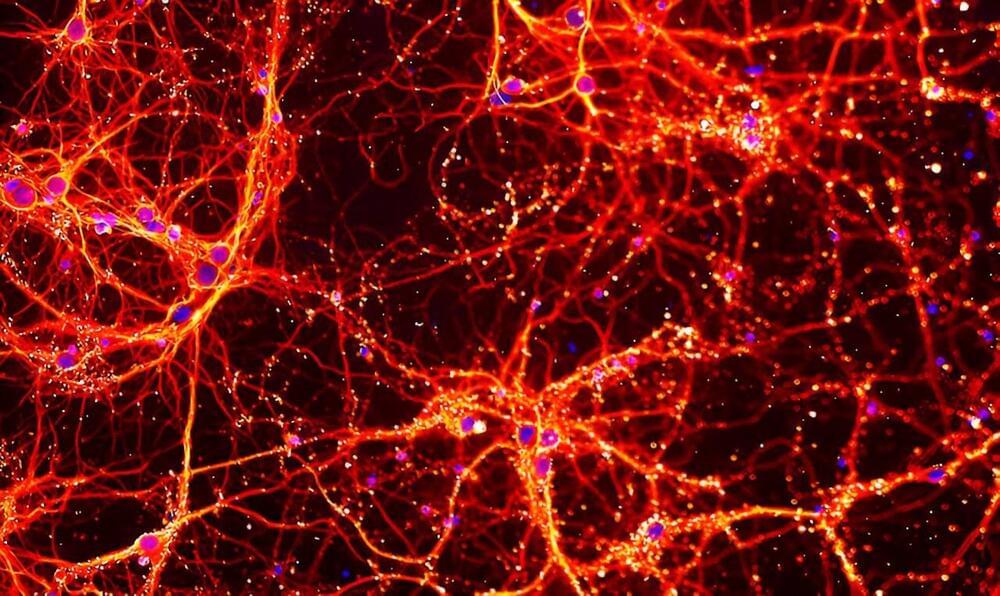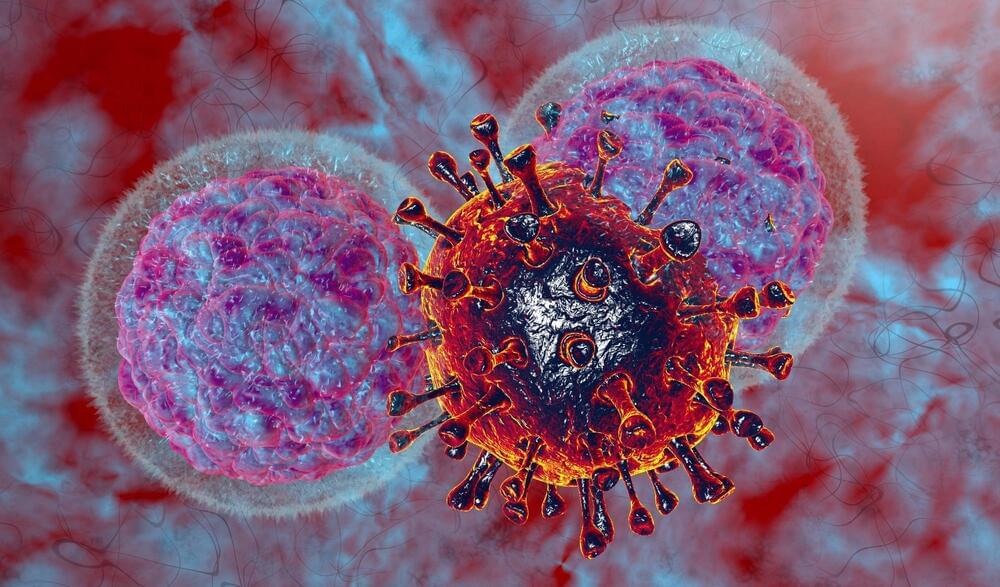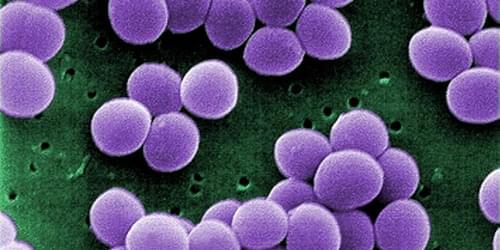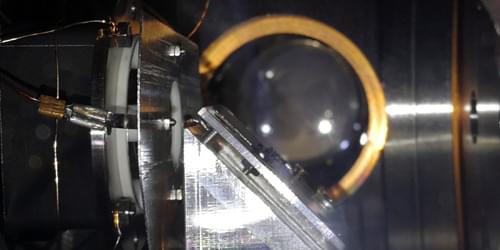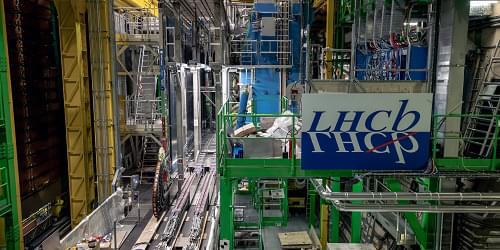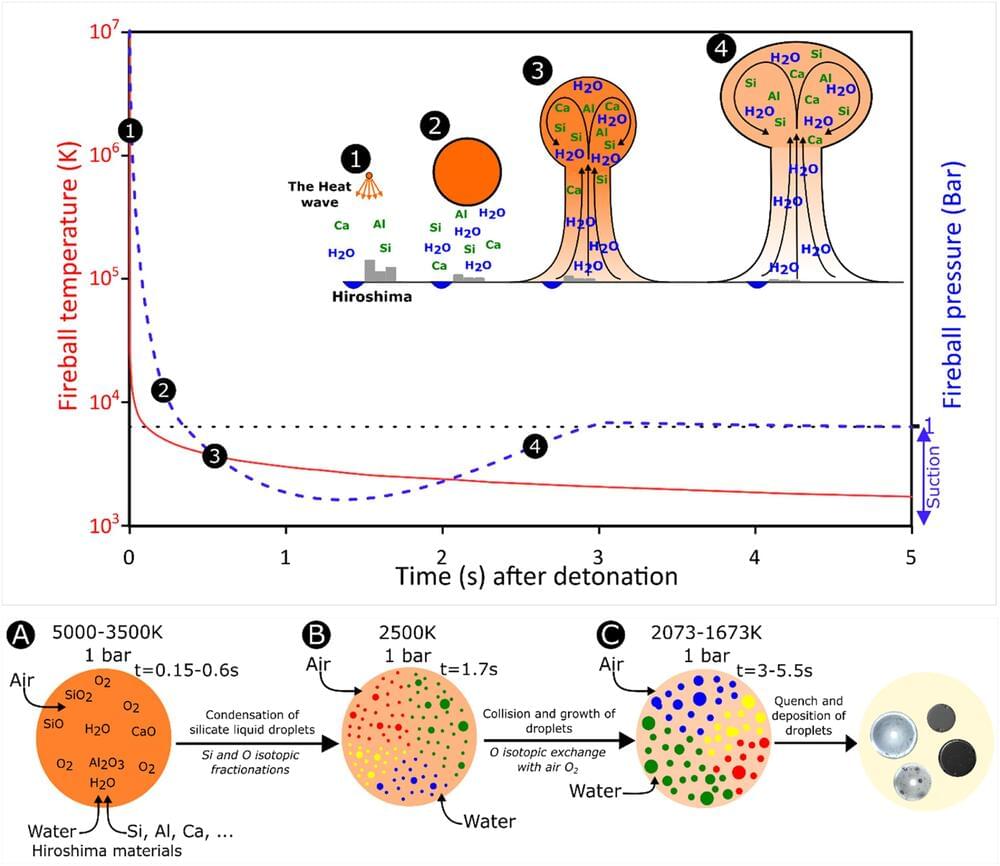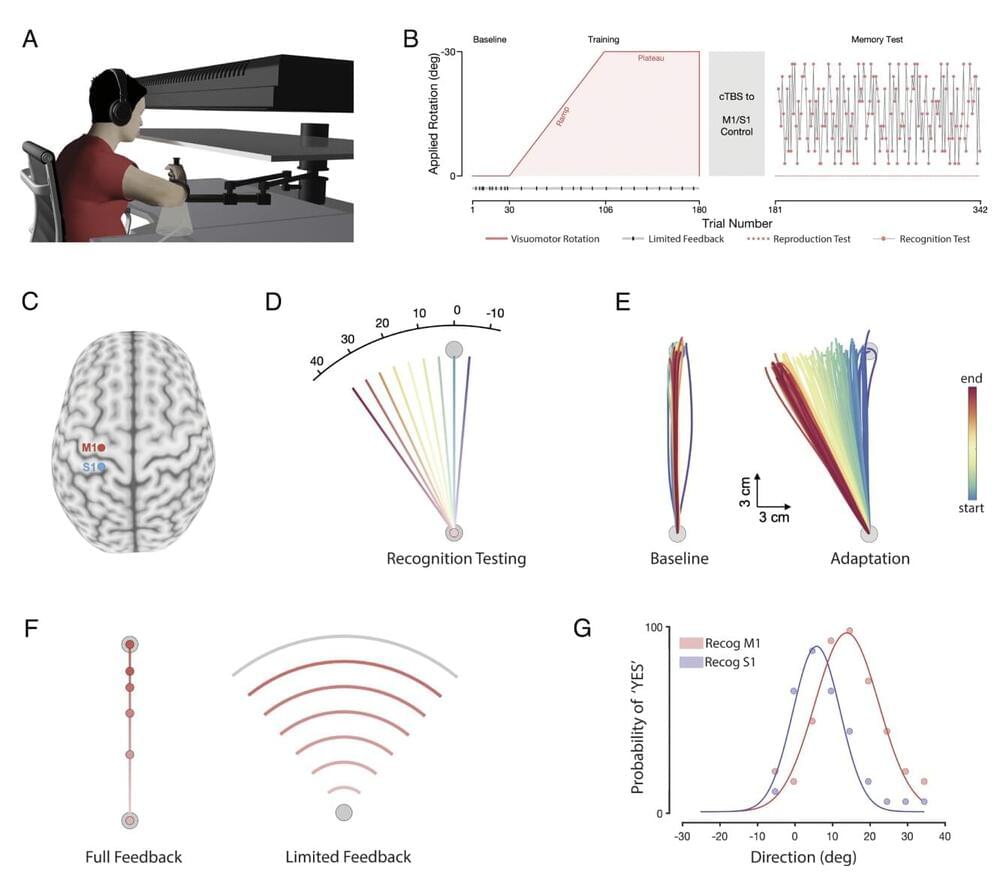Page 1077
Feb 23, 2024
Surface Acoustic Wave Cavity Optomechanics with Atomically Thin $h$-BN and mathrmWSe_2$ Single-Photon Emitters
Posted by Cecile G. Tamura in categories: materials, quantum physics
In pursuing quantum networking technologies, single-photon emitters in acoustic cavities are a promising pathway that enables the conversion and transfer of quantum information across multiple platforms. The recent discovery of single-photon emitters within two-dimensional (2D) materials, such as WSe and hexagonal boron nitride (h-BN), opens new avenues in exploring such quantum optomechanical phenomena in lower dimensional systems. In this work, we demonstrate the integration of 2D-based single-photon emitters with surface acoustic wave optomechanical cavities and illustrate their potential for radio-frequency electronic control of quantum light emission.
Using simple exfoliation techniques, WSe and h-BN layers are transferred onto surface acoustic wave cavities patterned on lithium niobate—a highly piezoelectric host material. Using electro-optical measurements, we confirm high-quality resonators and cavity-phonon modes that couple to the 2D quantum emitters. Remarkably, the interaction between the 2D emitters and acoustic waves is exceptionally strong owing to the ultrathin nature of the 2D materials and their proximity to the surface waves, verified through quantum spectroscopy measurements. In addition to the radio-frequency acoustic modulation of the emitters in these materials, new physics emerges from the emitter-phonon coupling that leads to new mechanisms for high-speed manipulation of quantum emitters, opening avenues for the generation of entangled-photon pairs.
These advancements set the stage for the exploration of cavity optomechanics with 2D materials. In future experiments, higher frequency resonators will enable studies of the interplay and dynamics between single photons and phonons deep in the quantum regime, a key technology for quantum networking.
Feb 23, 2024
New insight into gene uncovers its link to incurable birth defect
Posted by Shubham Ghosh Roy in categories: genetics, neuroscience
Researchers have unraveled how mutations in a gene can lead to an incurable neurodevelopmental disorder that causes abnormal brain development in newborns and infants.
The WEHI study is the first to prove that a protein called Trabid helps control neuronal development, and that mutations to this protein can lead to microcephaly —a condition where a baby’s brain is smaller than expected.
It’s hoped the milestone findings will provide a deeper understanding into the protein’s impact on healthy development and lead to treatments that can slow or stop the development of microcephaly and potentially other neurological disorders.
Feb 23, 2024
Natural killer cells lead the charge in cancer treatment innovation
Posted by Shubham Ghosh Roy in categories: bioengineering, biotech/medical
🧬 🔬 💉
Review synthesizes research on NK cells’ role in cancer immunity and their potential in therapeutics through bioengineering, immune checkpoint inhibitors, and cell engagers, highlighting ongoing preclinical and clinical trials.
Feb 23, 2024
Nuro gets a leg up from Arm in launching its third-generation delivery robot
Posted by Shailesh Prasad in categories: business, robotics/AI, transportation
“We create the lowest power performance technology,” said Dipti Vachani, senior VP and general manager for Arm’s automotive business, in an interview, “so that Nuro can then take advantage of all that AI software.”
Nuro was founded in 2016 by Dave Ferguson and Jiajun Zhu, two veterans of the Google self-driving car project that would go on to become Waymo. It is one of the few companies operating fully driverless vehicles — that is, vehicles without safety drivers behind the wheel — on public roads today.
Feb 23, 2024
Reducing Persistence of Antibiotic Resistance
Posted by Saúl Morales Rodriguéz in category: biotech/medical
In 1940, 12 years after Alexander Fleming discovered penicillin, microbiologists made a concerning discovery: a strain of the bacteria Escherichia coli had developed resistance to the new, life-saving drug. Antibiotic resistance of disease-causing bacteria is now a global problem, with bacteria continually evolving mechanisms that prevent such drugs from killing the organisms or inhibiting their growth. Now Vanderlei Bagnato of the University of São Paulo and his colleagues have developed a light-based approach that could help reduce this trend in a Staphylococcus bacterium that can cause skin infections and pneumonia [1]. The researchers presented their technique at the recent SPIE Photonics West 2024 conference in San Francisco.
If the current trend continues, epidemiologists predict that the number of people infected by antibiotic-resistant bacteria will reach 225 million worldwide by 2030. By 2050 these bacteria will cause 10 million deaths annually. Studies show that infections acquired in hospital are increasingly prone to this problem. “People are dying every day in [intensive care wards] from resistant bacteria. If someone acquires pneumonia, and antibiotics don’t work, they’re in trouble,” Bagnato says.
One route to tackling antibiotic resistance is to develop new drugs, which is a costly process. Another route—and one that is becoming increasingly popular—is to inhibit antibiotic-eluding mechanisms that a bacterium develops as it evolves. This inhibition can be achieved using light, a process those in the field call photodynamics, and the route Bagnato and his colleagues have taken. “We’re using photodynamics to reverse resistance so that antibiotics can act again,” he says.
Feb 23, 2024
Laser-Cooling Positronium
Posted by Saúl Morales Rodriguéz in category: particle physics
The goal of the AEgIS Collaboration at CERN in Switzerland is to measure the effect of Earth’s gravitational field on antimatter—specifically, antihydrogen atoms. Antihydrogen is produced using positronium—which consists of an electron and a positron bound together—and the colder the positronium, the faster the antihydrogen production rate. Accordingly, AEgIS researchers have spent the past four years trying to develop a way to cool positronium. Now, with their first demonstration of positronium laser cooling, they have succeeded [1].
Laser-cooling positronium is a much tougher undertaking than laser-cooling regular atoms. Positronium can only survive for 140 nanoseconds before annihilating, even in ultrahigh vacuum. Moreover, the relevant transition frequency for positronium cooling is in the deep ultraviolet, where laser technology remains relatively undeveloped.
The AEgIS Collaboration designed a custom laser system that uses the mineral alexandrite as the lasing medium. Alexandrite-based lasers emit at deep-ultraviolet wavelengths, but devices that meet the intensity and pulse-length requirements for positronium cooling are not commercially available. The researchers also had to overcome another major hurdle: to avoid the loss of positronium atoms during the cooling process, any external electric and magnetic fields had to be eliminated. As a result, the electrostatic equipment used for manipulating the positronium had to be capable of being switched off in a matter of nanoseconds.
Feb 23, 2024
Three’s Company for Bottom Quarks
Posted by Saúl Morales Rodriguéz in category: particle physics
Bottom quarks are increasingly more likely to exist in three-quark states rather than two-quark ones as the density of their environment increases.
Feb 23, 2024
Hiroshima fallout debris linked to first solar system condensates
Posted by Saúl Morales Rodriguéz in categories: biotech/medical, chemistry, military
The atomic bombing of Hiroshima, Japan, by the United States in August 1945 was not only devastating at the time, resulting in the deaths of hundreds of thousands of people, but it has had long-standing impacts to the present day, particularly the elevated incidence of cancer from radiation.
Continued research of Hiroshima Bay has uncovered a new kind of debris from the fallout, known as Hiroshima glasses. These formed from vaporized materials of the bomb and the surrounding landscape and infrastructure being targeted.
New research published in Earth and Planetary Science Letters has analyzed the chemical and isotopic compositions of these glasses to ascertain their formation process during the nuclear event.
Feb 23, 2024
Exploring how the somatosensory cortex contributes to the encoding of newly learned movements
Posted by Saúl Morales Rodriguéz in category: neuroscience
The somatosensory cortex is a brain region known to play a role in the detection of tactile information, changes in temperature, and pain sensations. Some recent studies found that this crucial brain region is also involved in the human ability to learn and retain new motor skills.
Despite initial findings hinting at the involvement of the somatosensory cortex in motor learning, the nature of its involvement remains poorly understood.
Researchers at University of Pittsburgh Brain Institute recently carried out a study aimed at better understanding the contributions of the somatosensory cortex to the learning and retention of new movements. Their findings, published in Proceedings of the National Academy of Sciences, suggest that the somatosensory cortex could be specifically responsible for encoding new sensory targets or, in other words, learning-adapted sensory states.

